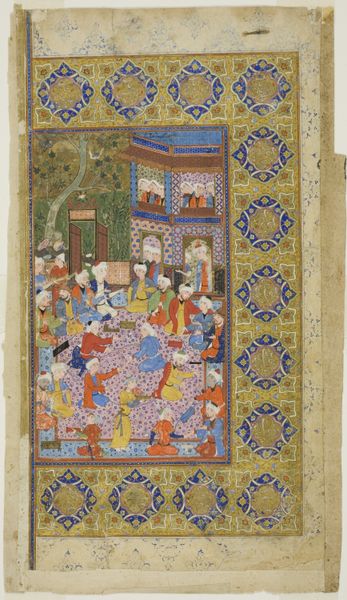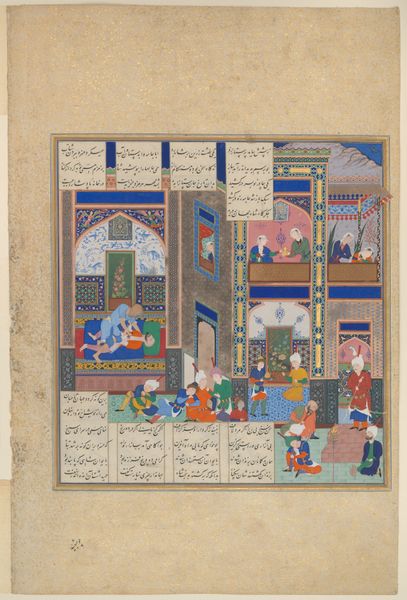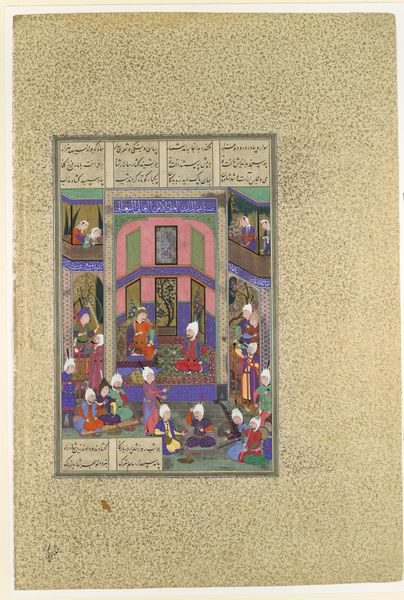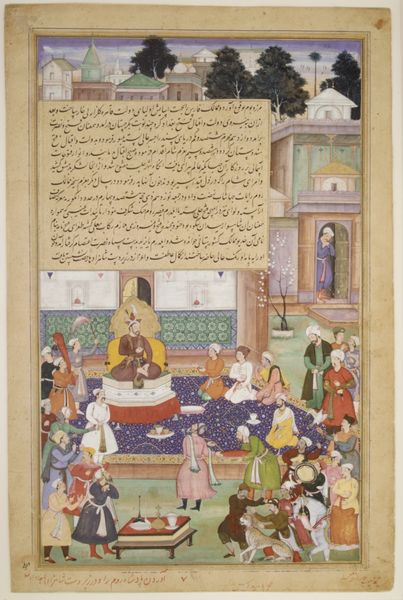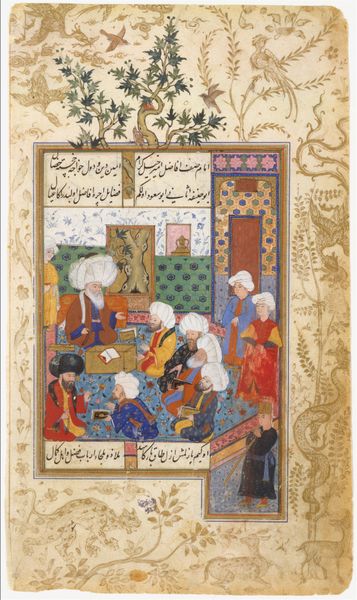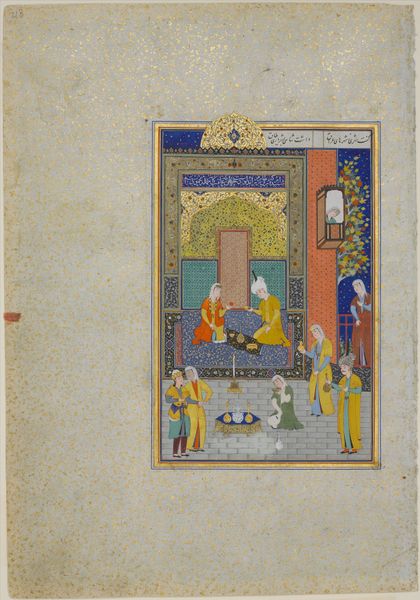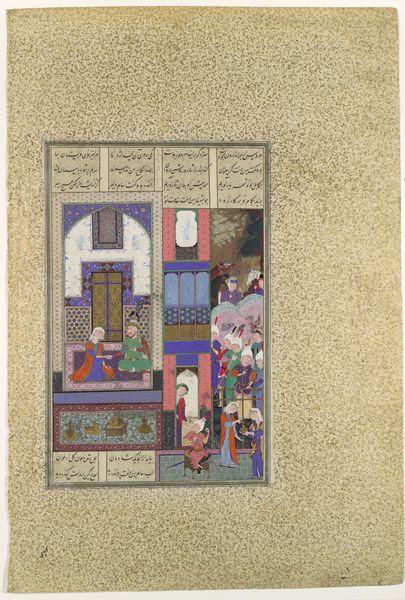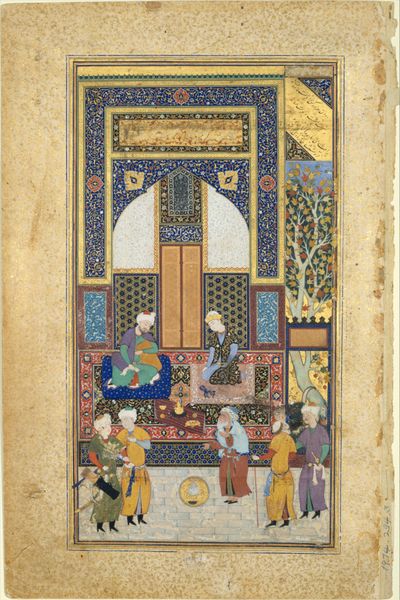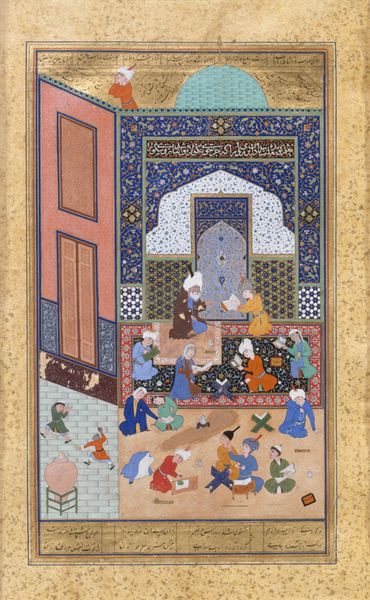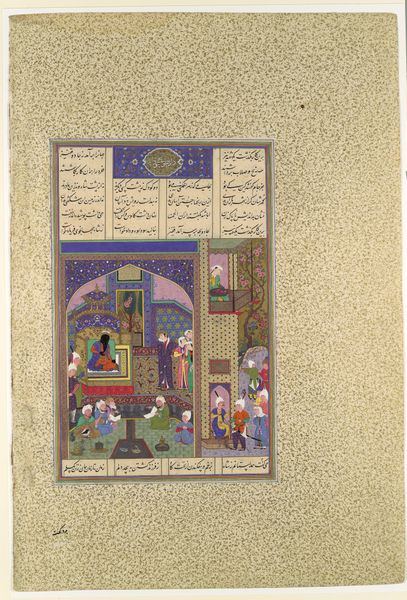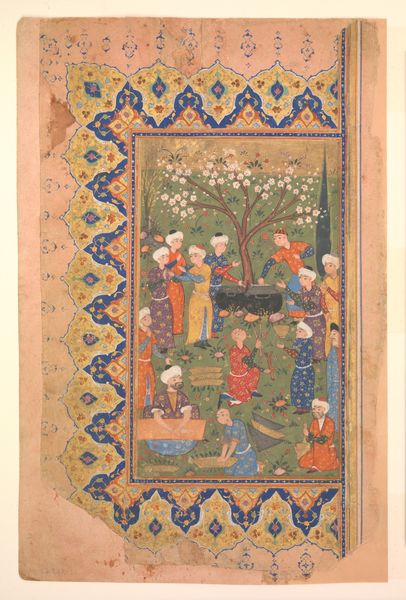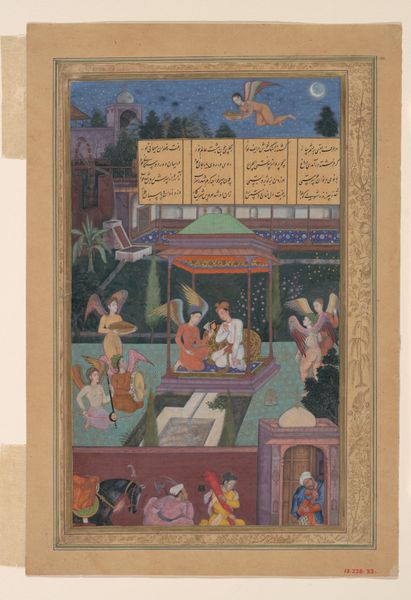
painting, watercolor
#
portrait
#
water colours
#
narrative-art
#
painting
#
asian-art
#
figuration
#
watercolor
#
islamic-art
#
miniature
Dimensions: height 431 mm, width 280 mm
Copyright: Rijks Museum: Open Domain
Curator: This painting, titled "Rustam takes leave of Shah Kai Khusrau," dates back to somewhere between 1469 and 1506. Created with watercolor, it really offers a window into the rich visual culture of the time. Editor: My first impression is one of controlled exuberance! The artist creates a very defined space, with strong vertical and horizontal elements, and then fills it with these incredibly vibrant figures and details. Curator: It depicts a pivotal moment, wouldn't you agree? It speaks volumes about duty, sacrifice, and the complex relationship between a warrior hero and his king. It is set against a backdrop of political intrigue within dynastic lineages. Editor: Absolutely, and look at the geometry; the perfect rectangles and repeating patterns of the building compared to the human forms, a brilliant way of playing with positive and negative space in this miniature world. Curator: I appreciate the layers, not just visual, but conceptual. Rustam, a figure of immense strength, bows before the Shah, reminding us of the intricate power dynamics present in that period of time. Rustam, although seemingly all powerful is ultimately at the mercy of the all male governance of the court. Editor: It’s such a captivating narrative unfolding. Consider how the artist organizes the figures: creating visual weight that feels stable, and gives form to hierarchy. The use of multiple perspectives creates flatness overall but an interesting and dreamlike spatial experience. Curator: I believe that analyzing the color palette is just as important to decode the scene and message, considering its location with influence in Asian arts; note how certain hues recur on different individuals; are there class significations, a symbol of allegiance to explore between members of the court, a depiction of family perhaps? Editor: An important reflection indeed, while thinking on what each compositional elements contribute to the formal tension and emotional significance it holds! It allows one to be carried into its delicate complexity. Curator: Yes, understanding this painting through socio-historical analysis can reveal new stories and provide new awareness in social stratifications of power. Editor: And looking at the interplay of line, form, and color offers another enriching experience. Each layer and mode of appreciation bringing its own unique reward.
Comments
No comments
Be the first to comment and join the conversation on the ultimate creative platform.
